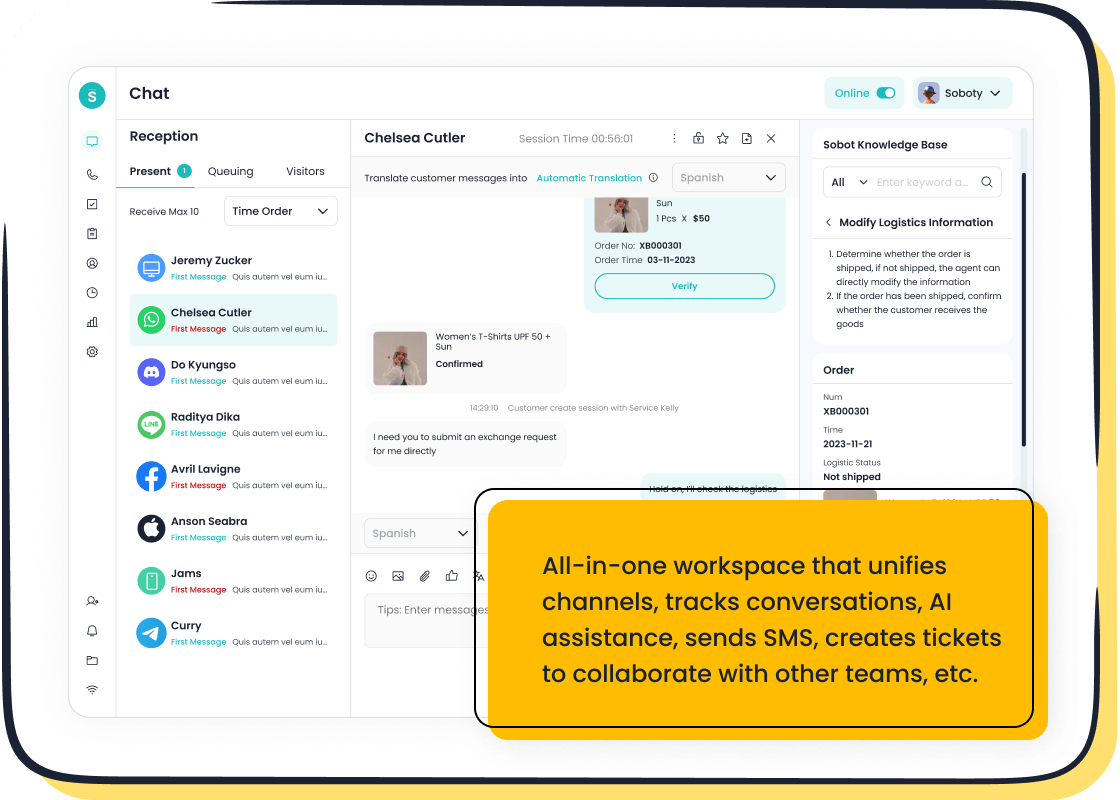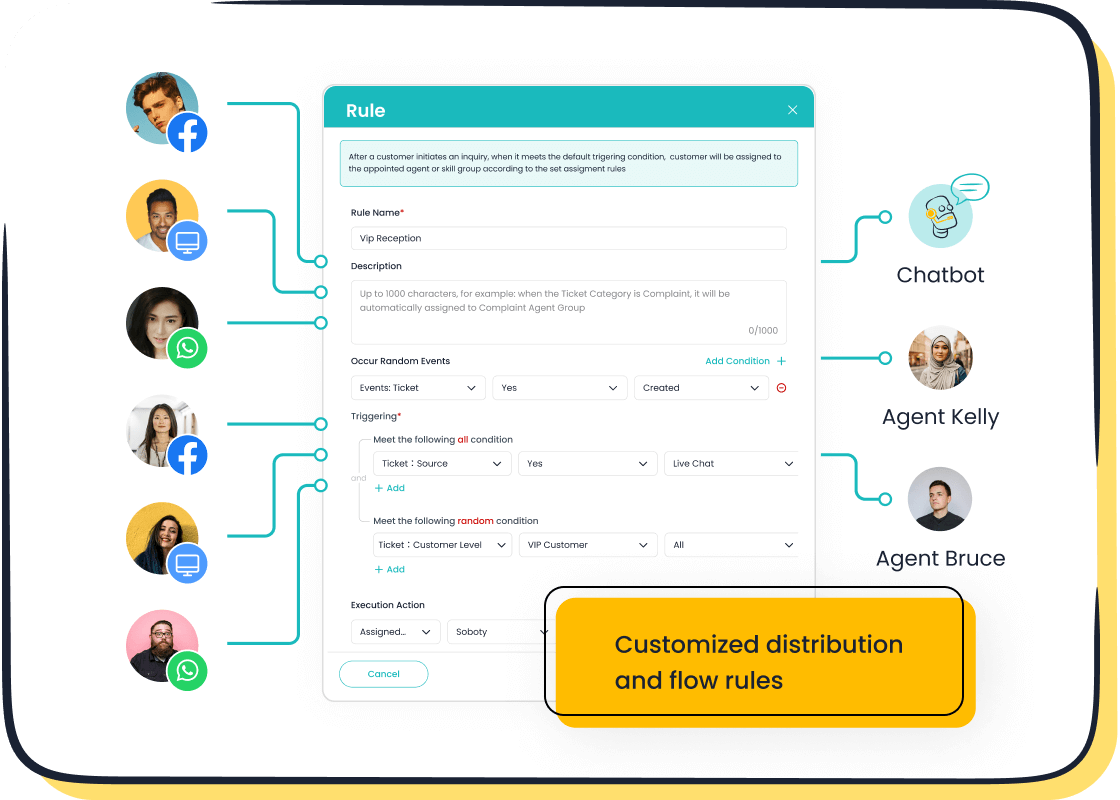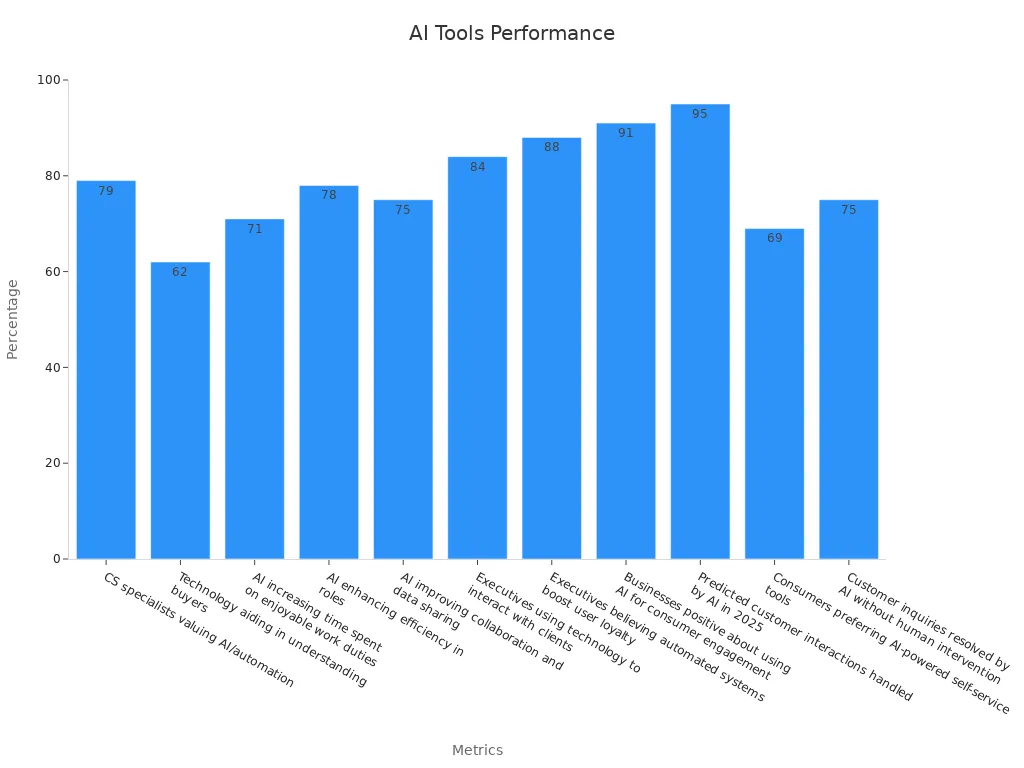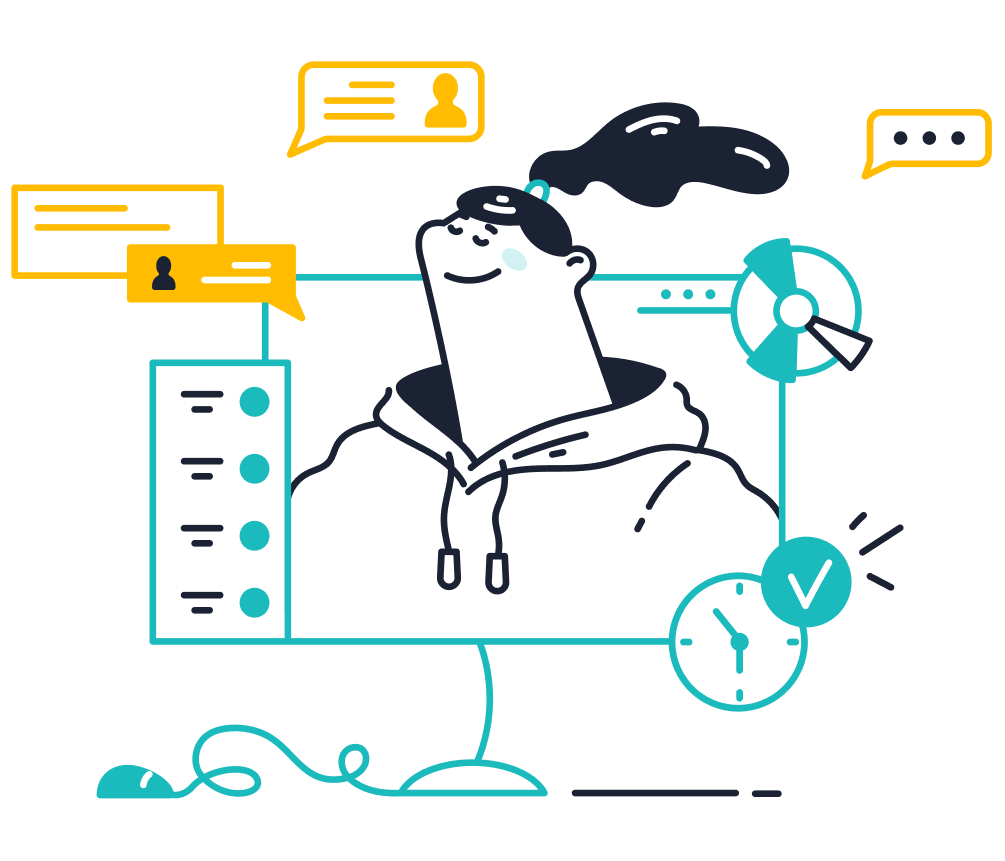Top AI Tools for Streamlined Customer Interactions

Imagine reaching out to a company and getting instant, accurate help—no waiting, no frustration. That’s the magic of customer service AI tools. With tools like chatbots and automation, businesses can respond faster, personalize interactions, and keep you satisfied. Did you know 80% of companies plan to use AI-powered chatbots by 2025? Plus, 74% of executives believe AI will revolutionize customer experiences. Companies like Sobot are already transforming how businesses connect with customers, making interactions seamless and efficient. AI isn’t just a trend; it’s reshaping how the world handles customer service.
Benefits of Customer Service AI Tools

Faster Response Times
Nobody likes waiting, especially when you need help. That’s where AI shines. AI-powered customer support tools can respond to inquiries instantly, cutting down wait times significantly. For example, companies using AI systems have seen a 71% reduction in first response times. Imagine going from waiting hours to getting answers in minutes—or even seconds!
AI tools like chatbots work 24/7, so your customers can get help anytime, even at 2 a.m. They handle routine questions, freeing up human agents to focus on more complex issues. This not only speeds up responses but also improves customer satisfaction. H&M, for instance, reduced their average first response time from 2 hours to just 30 minutes by using AI chatbots. Faster responses mean happier customers and a better overall customer experience.
Enhanced Personalization
Have you ever received a recommendation that felt like it was made just for you? That’s the magic of AI in customer service. AI tools analyze customer data to provide tailored suggestions and solutions. Whether it’s recommending a product or addressing a specific concern, these tools make interactions feel personal and meaningful.
Studies show that 71% of consumers expect personalized content, and 67% feel frustrated when interactions aren’t tailored to their needs. AI-powered customer service software ensures every interaction feels unique. Companies like Amazon and Netflix use AI to deliver personalized experiences, boosting customer loyalty and increasing conversion rates. With AI, you can make every customer feel valued.
Scalability for Growing Businesses
As your business grows, so do customer inquiries. Scaling your customer service team can be expensive and time-consuming. AI tools solve this problem by handling large volumes of requests without needing additional resources. They’re like having an extra team that never sleeps.
AI systems also help businesses save costs by automating repetitive tasks. For example, AI can forecast demand, optimize inventory, and even assist with decision-making. This flexibility allows you to grow without worrying about overwhelming your support team. A scalable solution like AI ensures your customer service tools grow with your business, keeping operations smooth and customers happy.
Cost Efficiency and Resource Optimization
When it comes to saving money and using resources wisely, AI tools are a game-changer. They help businesses cut costs by automating repetitive tasks, reducing errors, and improving efficiency. Imagine having a tool that works tirelessly, never takes a break, and handles tasks faster than any human could. That’s what AI brings to the table.
For example, companies like Unilever have used AI-powered demand forecasting to manage inventory better. This reduced food waste and made their supply chain more efficient. It’s not just about saving money—it’s about using resources smarter. In fact, by 2025, businesses are expected to rely heavily on real-time data and AI-driven insights to optimize spending and adapt to market changes.
Here’s a quick look at how AI tools are helping different sectors save money:
| Sector | Cost Reduction (%) | Percentage of Companies Experiencing Savings |
|---|---|---|
| Supply Chain | 10% to 19% | 41% |
| Marketing and Sales | 10% to 19% | 20% |
| Manufacturing | 10% to 19% | 32% |
| HR | 10% to 19% | 25% |
| Overall Savings | 20% or more | 4% |
These numbers show how AI tools can make a big difference. Whether it’s streamlining operations or reducing waste, the impact is clear. For businesses using customer service AI tools, the benefits are even more noticeable. Automating customer interactions with AI-powered customer service software not only saves money but also frees up your team to focus on more important tasks. This means better customer service and happier customers.
So, if you’re looking to cut costs and make the most of your resources, AI is the way to go.
Types of AI Tools for Customer Support
Chatbots and Virtual Assistants
Chatbots and virtual assistants are the superheroes of customer support. They work tirelessly to answer questions, guide users, and even process transactions. These AI-powered chatbots are available 24/7, ensuring your customers always get help when they need it. Hilton’s chatbot, Connie, is a great example. It uses natural language processing to assist guests with inquiries, making their experience smoother and more enjoyable.
The popularity of chatbots is skyrocketing. In 2022, the market size was valued at $4.7 billion, and it’s expected to reach $15.5 billion by 2028. By 2027, Gartner predicts that chatbots will become the primary customer service channel for 25% of organizations. Why? Because they’re efficient. They handle FAQs, help users navigate websites, and reduce wait times. If you want to automate customer service and improve customer experience, chatbots are a must-have tool.
Sentiment Analysis Tools
Understanding how your customers feel is key to delivering exceptional service. Sentiment analysis tools use AI to analyze emotions in customer interactions. These tools don’t just track words—they detect complex emotions like frustration or satisfaction. Imagine knowing exactly when a customer feels unhappy and being able to adjust your response instantly.
Here’s what makes sentiment analysis tools so powerful:
| Feature | Benefit |
|---|---|
| Real-Time Sentiment Tracking | Enables agents to adjust responses instantly based on live customer emotions. |
| Automated Emotion Detection | Provides deeper insights into customer sentiment by detecting complex emotions. |
| Multi-Channel Data Analysis | Offers a comprehensive view of customer sentiment across various communication channels. |
| Actionable Insights | Highlights customer pain points and satisfaction trends for proactive service improvements. |
| Enhanced Agent Performance | Allows managers to track agent interactions and identify coaching opportunities. |
These tools help you improve customer experience by identifying pain points and satisfaction trends. They’re perfect for businesses looking to enhance customer service with real-time customer service tools.
Workflow Automation Platforms
Workflow automation platforms simplify customer support processes. They automate repetitive tasks, like ticket routing and notifications, so your team can focus on solving complex issues. These platforms integrate seamlessly with cloud-based help desk software, making operations smoother and faster.
For example, automated ticket routing ensures inquiries go to the right department immediately. Real-time notifications keep your team updated, reducing response times. Integration with tools like ApiX-Drive eliminates manual data entry, saving time and reducing errors.
| Automation Strategy | Impact on Customer Support |
|---|---|
| Automated ticket routing | Directs inquiries to the right department quickly. |
| Real-time notifications | Reduces response times by keeping the team updated. |
| Integration with ApiX-Drive | Simplifies data transfer, reducing manual entry. |
Workflow automation platforms are essential customer service automation tools. They help you automate customer support, improve efficiency, and deliver better service to your customers.
AI-Powered Analytics and Reporting Tools
Imagine having a tool that not only tracks your customer interactions but also predicts what they might need next. That’s the power of AI-powered analytics and reporting tools. These tools don’t just collect data—they transform it into actionable insights that help you make smarter decisions.
AI analytics tools provide real-time insights, so you can see what’s happening with your customers right now. They also use predictive analytics to forecast trends, helping you stay ahead of the curve. For example, if you notice a spike in customer complaints about a product, you can address the issue before it becomes a bigger problem. These tools make it easier to spot patterns and understand customer behavior.
Here’s why businesses love AI-powered analytics:
- They uncover hidden patterns and correlations that traditional methods might miss.
- They help you identify opportunities and improve strategies using historical data.
- They give you a competitive edge by enabling quick responses to market changes.
With these tools, you can track key metrics like response times, customer satisfaction scores, and agent performance. This data helps you optimize your customer service processes. For instance, if your team struggles with long response times, analytics can pinpoint the bottleneck and suggest solutions.
AI-powered reporting tools also simplify complex data. They create easy-to-read dashboards and reports, so you don’t need to be a data expert to understand them. This means you can focus on improving your service instead of getting lost in spreadsheets.
In today’s fast-paced world, staying informed is crucial. AI-powered analytics tools ensure you’re always one step ahead, making your customer interactions smoother and more effective.
Top AI Tools for Streamlined Customer Interactions
HubSpot Service Hub - Features and Ideal Use Cases
HubSpot Service Hub is a powerful customer service software designed to simplify and enhance customer interactions. It centralizes support requests, automates workflows, and provides tools for real-time customer service.
Key Features:
- Help Desk Software: Automatically routes tickets to the right team member, ensuring faster resolutions.
- Live Chat and Chatbots: Offers real-time support and automated responses for FAQs.
- Ticket Routing: Matches inquiries with the most qualified representative.
- Automated Notifications: Keeps customers informed about ticket status changes.
- NPS Surveys: Collects feedback to improve service quality and measure loyalty.
Ideal Use Cases:
- Growing Businesses: As your customer base expands, managing inquiries can become overwhelming. HubSpot’s automated ticket routing ensures efficient follow-ups, saving time and resources.
- Immediate Assistance: Imagine a customer struggling with a form. Live chat provides instant help, while chatbots handle initial queries before escalating complex issues.
- Feedback Collection: Use NPS surveys to understand customer satisfaction and identify areas for improvement.
HubSpot Service Hub doesn’t just streamline customer support tools; it transforms how you interact with customers. With features like cloud-based help desk software and real-time notifications, it’s perfect for businesses looking to automate customer support and improve customer experience.
Zendesk - Features and Ideal Use Cases
Zendesk is a versatile platform that combines AI tools for customer support with advanced analytics to deliver exceptional service. It’s known for its robust reporting capabilities and AI-driven suggestions.
Key Features:
- First Contact Resolution: AI ensures inquiries are resolved quickly, improving efficiency.
- Knowledge Base: Offers AI-powered suggestions to help customers find answers faster.
- Reporting and Analytics: Tracks metrics like response times and satisfaction rates.
- Churn Reduction: Helps businesses retain customers by addressing issues proactively.
Ideal Use Cases:
- Customer Retention: Reduce churn by identifying and resolving issues before they escalate.
- Data-Driven Decisions: Use customizable analytics to optimize your customer service processes.
- Efficient Responses: AI-powered tools ensure faster replies, enhancing customer satisfaction.
Zendesk’s ability to improve collaboration and data sharing makes it a favorite among businesses. According to studies, it delivers a 15% improvement in first contact resolution and a 50% faster response time compared to competitors. These features make Zendesk a reliable choice for businesses aiming to enhance customer experience through AI in customer service.
Ada - Features and Ideal Use Cases
Ada stands out for its focus on personalization and ease of use. This no-code platform empowers non-technical teams to deliver tailored customer interactions effortlessly.
Key Features:
- AI-Powered Personalization: Uses machine learning to provide customized recommendations.
- CRM Integration: Streamlines workflows and enhances customer engagement.
- Real-Time Analysis: Tracks customer data to deliver instant, personalized solutions.
Ideal Use Cases:
- Personalized Interactions: Build stronger relationships by tailoring responses to individual needs.
- Ease of Use: Non-technical teams can manage customer service without extensive training.
- Enhanced Engagement: Use real-time insights to improve customer satisfaction and loyalty.
Ada’s platform automates personalization efforts, making it easier for businesses to connect with their customers. Clients have praised its ability to strengthen relationships and boost long-term loyalty. With features like CRM integration and real-time analysis, Ada is perfect for businesses looking to enhance customer support tools and deliver exceptional service.

Sobot Live Chat - Features and Ideal Use Cases

Sobot Live Chat is your go-to solution for seamless customer interactions. It’s designed to help businesses connect with customers instantly, no matter where they are. Whether it’s through websites, apps, or social media platforms like WhatsApp and Facebook, Sobot Live Chat ensures you’re always available to your audience.
Key Features:
- Omnichannel Support: Engage with customers across multiple platforms without missing a beat.
- AI-Assisted Tools: Boost efficiency with AI-powered features like intelligent assignment and auto-translation.
- Built-In Analytics: Track over 150 indicators to optimize your service and make data-driven decisions.
- Customizable Widgets: Match your brand’s look and feel with ease.
- Rich Messaging Options: Use images, videos, and more to create engaging conversations.
Ideal Use Cases:
- Improving Customer Satisfaction: Sobot Live Chat’s AI tools ensure quick and accurate responses, leading to a 97% customer satisfaction score.
- Boosting Conversion Rates: With precise profiling, you can turn visitors into clients, achieving a 38% increase in conversions.
- Handling High Volumes: Manage large-scale inquiries effortlessly with omnichannel support and workflow automation.
Here’s a snapshot of how Sobot Live Chat improves efficiency:
| Metric | Value |
|---|---|
| Reduction in inbound discussion volume | 20% |
| Increase in positive feedback | 96%+ |
| Correct answers provided by AI platform | 80% |
| Customer satisfaction rate | 95% |
| Self-service question resolution | 22.2% |
| Customer satisfaction score (CSAT) | 97% |
| Problems solved | 85% |
| Customer happiness rate | 99% |
| Sign-off rate increase | 35% |
| COD collection rate increase | 40% |
Sobot Live Chat doesn’t just enhance customer interactions—it transforms them. Imagine reducing inbound discussions by 20% while maintaining a 99% happiness rate. That’s the power of Sobot Live Chat. It’s perfect for businesses aiming to improve customer satisfaction, streamline operations, and grow revenue.
Tip: You can try Sobot Live Chat for free to see how it fits your business needs.
Intercom - Features and Ideal Use Cases
Intercom is another excellent tool for streamlining customer support. It focuses on real-time engagement and automation, making it easier to connect with your audience.
Key Features:
- Real-Time Engagement: Address customer needs instantly with fast chat responses.
- AI-Powered Chatbot (Fin): Automate repetitive tasks and provide quick solutions.
- Personalized Interactions: Tailor responses to individual customers for better retention.
- Integration Options: Connect with other tools to improve efficiency.
Ideal Use Cases:
- Enhancing Customer Interactions: Intercom excels in real-time engagement, ensuring immediate responses to customer inquiries.
- Streamlining Support Processes: Automation capabilities reduce manual tasks, saving time and resources.
- Boosting Retention Rates: Personalized interactions help build stronger relationships with your customers.
Here’s why businesses love Intercom:
- It improves response times with fast chat features.
- It personalizes customer interactions, leading to better retention.
- It integrates seamlessly with other tools, enhancing overall efficiency.
Intercom’s focus on real-time engagement and automation makes it a valuable asset for businesses looking to improve customer support. Whether you’re handling inquiries or building long-term relationships, Intercom has the tools to help you succeed.
How to Choose the Right AI Tool for Your Business
Assessing Your Business Needs
Choosing the right AI tool starts with understanding your business needs. Ask yourself: What areas of your customer service could benefit most from AI? Maybe you want to reduce response times or improve customer satisfaction. Setting clear goals helps you focus on tools that align with your objectives.
Here’s a simple approach to get started:
- Identify the pain points in your customer support operations.
- Define what you want to achieve, like faster resolutions or better personalization.
- Research AI tools for customer support that match your specific requirements.
For example, if your team struggles with repetitive inquiries, a chatbot might be the perfect solution. On the other hand, if you need better insights into customer behavior, analytics tools could be the way to go. By narrowing down your needs, you’ll save time and find a tool that truly adds value.
Evaluating Scalability and Integration Capabilities
Your business isn’t static, so your AI tool shouldn’t be either. Scalability is key. Look for tools that can handle growing data volumes and adapt to your changing needs. A scalable tool ensures you won’t outgrow it as your business expands.
Integration is equally important. The tool should work seamlessly with your existing systems, like your CRM or customer service software. This ensures a smooth adoption process and avoids disruptions.
Here’s a quick comparison to consider:
| Evaluation Criteria | Description |
|---|---|
| Scalability | Can the tool grow with your business and handle increasing customer demands? |
| Integration Capabilities | Does it integrate smoothly with your current systems and workflows? |
Real-world examples show how these factors impact success. Companies that prioritize scalability and integration often experience fewer challenges during implementation. They also future-proof their investments, ensuring long-term success.
Considering Budget and ROI
Budget plays a big role in your decision. You don’t want to overspend or choose a tool that doesn’t deliver value. Start by setting a clear budget. Then, evaluate the return on investment (ROI). Ask yourself: Will this tool save time, reduce costs, or improve efficiency?
AI tools can streamline processes, minimize errors, and improve decision-making. For instance, they can help with budgeting and forecasting, leading to better financial performance. When comparing tools, weigh the costs against the benefits. A tool that saves hours of manual work or boosts customer satisfaction is worth the investment.
Tip: Start with a pilot program to test the tool’s effectiveness before committing fully. This helps you ensure it meets your expectations without straining your budget.
Prioritizing User-Friendliness and Support
When choosing an AI tool, user-friendliness and support should be at the top of your list. Why? Because even the most advanced tool won’t help if it’s too complicated to use. You want something that feels intuitive, so your team can hit the ground running without hours of training.
A user-friendly AI tool makes your life easier. It simplifies tasks, reduces errors, and saves time. For example, tools with clean interfaces and clear instructions help your team focus on what matters—delivering great customer service. Plus, when your team feels confident using the tool, they’ll work more efficiently and with less frustration.
Support is just as important. Imagine running into a problem and not knowing where to turn. That’s why you need a tool backed by reliable customer support. Whether it’s live chat, email, or a detailed knowledge base, having help available when you need it makes all the difference.
Here’s how prioritizing user-friendliness and support benefits your business:
- It ensures smooth adoption by your team, reducing resistance to change.
- It improves the overall user experience by identifying and solving issues quickly.
- It fosters a customer-centric culture, which is essential for long-term success.
AI tools also help you understand how users interact with your products. They identify problems and offer insights, making digital experiences smoother and more enjoyable. But remember, AI alone can’t create a customer-focused culture. That’s up to you and your team.
So, when evaluating AI tools, ask yourself: Is it easy to use? Does it come with strong support? These questions will guide you toward a solution that fits your needs and keeps your team and customers happy.
Future Trends in AI Tools for Customer Service

Predictive AI for Proactive Support
Imagine knowing what your customers need before they even ask. That’s the power of predictive AI. By analyzing past interactions and patterns, predictive analytics helps you anticipate customer needs and solve problems before they arise. For example, if a customer frequently contacts support about a product feature, predictive AI can alert your team to offer proactive assistance. This not only improves customer satisfaction but also builds trust.
As AI evolves, predictive tools will become even smarter. They’ll integrate seamlessly with voice AI and chatbots, offering real-time, personalized support. Businesses using predictive analytics have seen higher efficiency and happier customers. It’s like having a crystal ball for customer service, helping you stay one step ahead.
Multilingual AI for Global Customer Bases
Serving a global audience means breaking language barriers. Multilingual AI tools make this possible by offering real-time translation and localization. These tools let your customers communicate in their preferred language, creating a more inclusive experience. For instance, AI-powered translation can instantly interpret live chats or emails, ensuring smooth communication across borders.
The demand for multilingual AI is growing as businesses expand globally. Real-time translation tools don’t just improve communication—they enhance the overall customer experience. Whether it’s localizing content or handling international inquiries, multilingual AI ensures your business speaks the language of its customers.
| Feature | Benefit |
|---|---|
| Real-time translation | Seamless communication across languages. |
| Enhanced localization | Tailored content for different regions. |
| Improved user experience | Higher satisfaction and engagement. |
AI-Driven Omnichannel Experiences
Today’s customers use multiple channels to interact with businesses. AI-driven omnichannel customer service platforms unify these channels, creating a seamless experience. Whether it’s email, social media, or live chat, AI ensures every interaction feels connected.
For example, businesses adopting omnichannel strategies have seen a 91% increase in customer retention rates. AI tools also help reduce call volumes and improve response times by automating repetitive tasks. Imagine a customer starting a conversation on social media and continuing it via email without repeating themselves. That’s the magic of AI in customer service. It simplifies interactions and makes your customers feel valued.
AI tools have completely changed how businesses interact with customers. They personalize every interaction, making customers feel valued. These tools analyze data to understand customer needs better and even predict future trends. You can also use AI to manage inventory, track behavior across channels, and make smarter decisions in real time.
Adopting the right AI tools isn’t just an option—it’s essential. They help you stay competitive, improve customer satisfaction, and create seamless experiences. If you want to deliver exceptional service, now’s the time to embrace AI.
Pro Tip: Start small, test the tools, and scale as your business grows.
FAQ
What are AI tools for customer interactions?
AI tools for customer interactions are software solutions that use artificial intelligence to improve how businesses communicate with customers. They include chatbots, sentiment analysis tools, and workflow automation platforms. These tools help you respond faster, personalize experiences, and streamline support processes.
How do AI chatbots improve customer service?
AI chatbots handle repetitive questions, provide instant answers, and work 24/7. They free up your team to focus on complex issues. For example, Sobot Live Chat uses AI to boost efficiency and ensure no customer inquiry goes unanswered, even during peak hours.
Can small businesses afford AI tools?
Yes! Many AI tools offer scalable pricing plans, making them accessible for small businesses. Some, like Sobot Live Chat, even provide free trials. You can start small, test the tool, and upgrade as your business grows.
Are AI tools difficult to integrate with existing systems?
Most AI tools are designed for easy integration. They work seamlessly with CRMs, help desk software, and other platforms. For instance, Sobot Live Chat integrates with multiple channels like WhatsApp, Facebook, and Instagram, ensuring smooth operations.
Do AI tools replace human agents?
Not at all! AI tools complement human agents by handling repetitive tasks and providing insights. This allows your team to focus on building relationships and solving complex problems. Think of AI as your team’s superpower, not a replacement.
Tip: Start with tools that align with your business needs and scale as you grow. AI is here to help, not complicate things!
See Also
Best 10 AI Solutions For Enterprise Call Centers
Enhancing Efficiency With AI Customer Service Tools
Comprehensive Guide To AI Software For Call Centers
